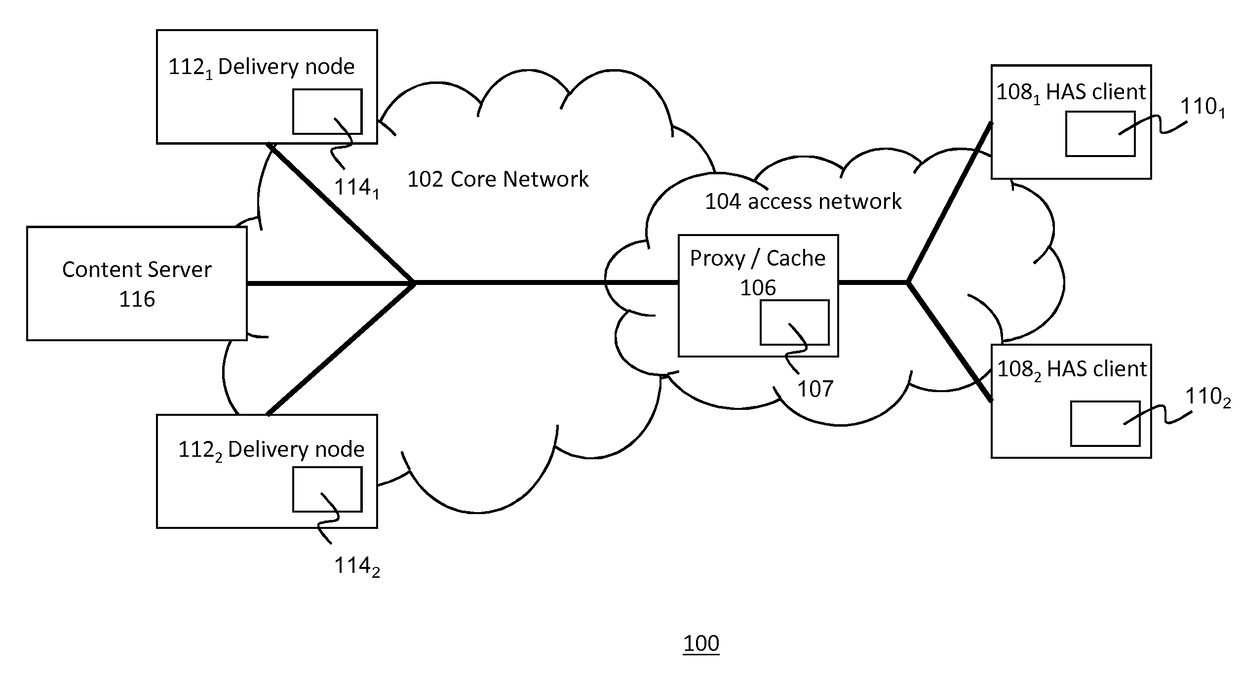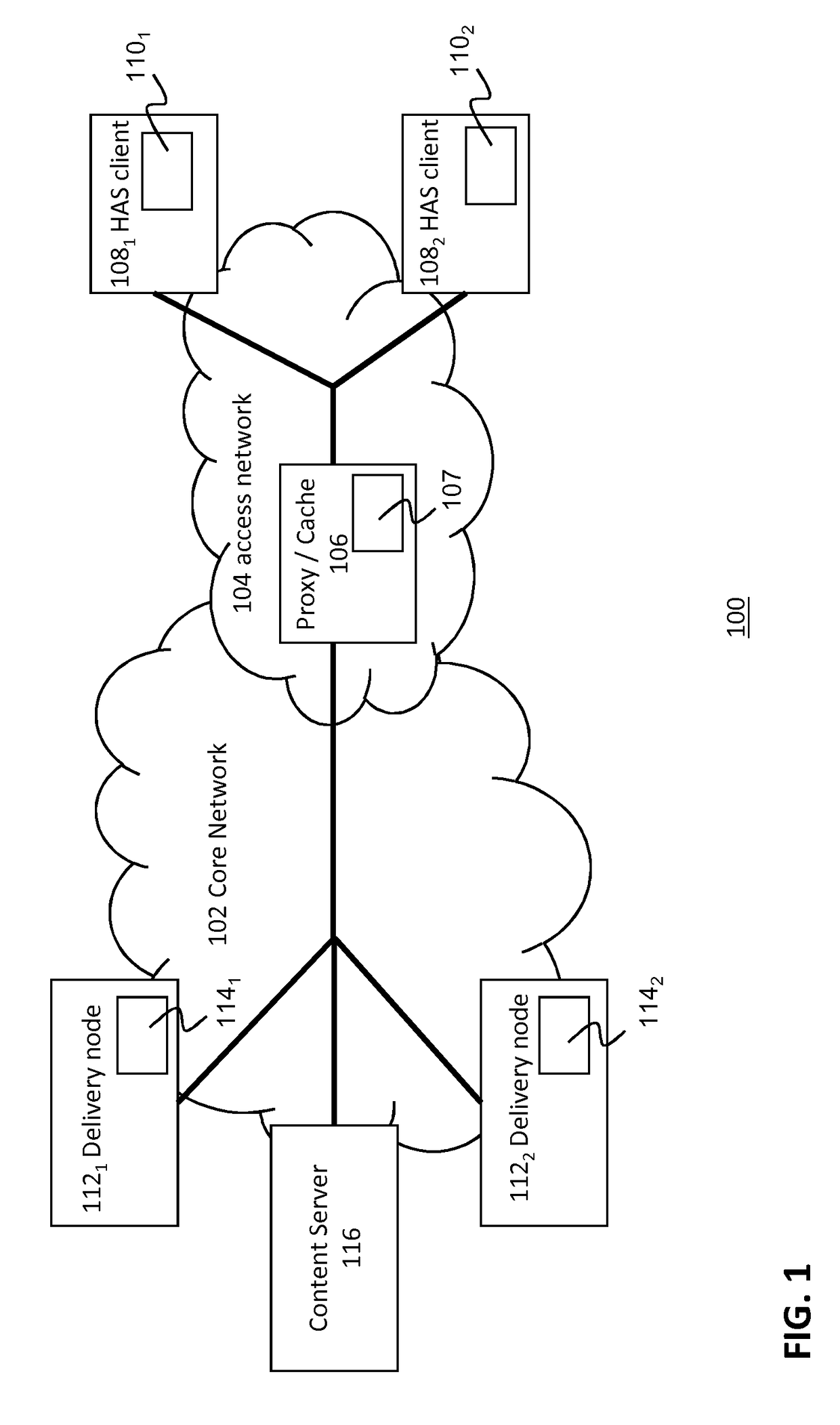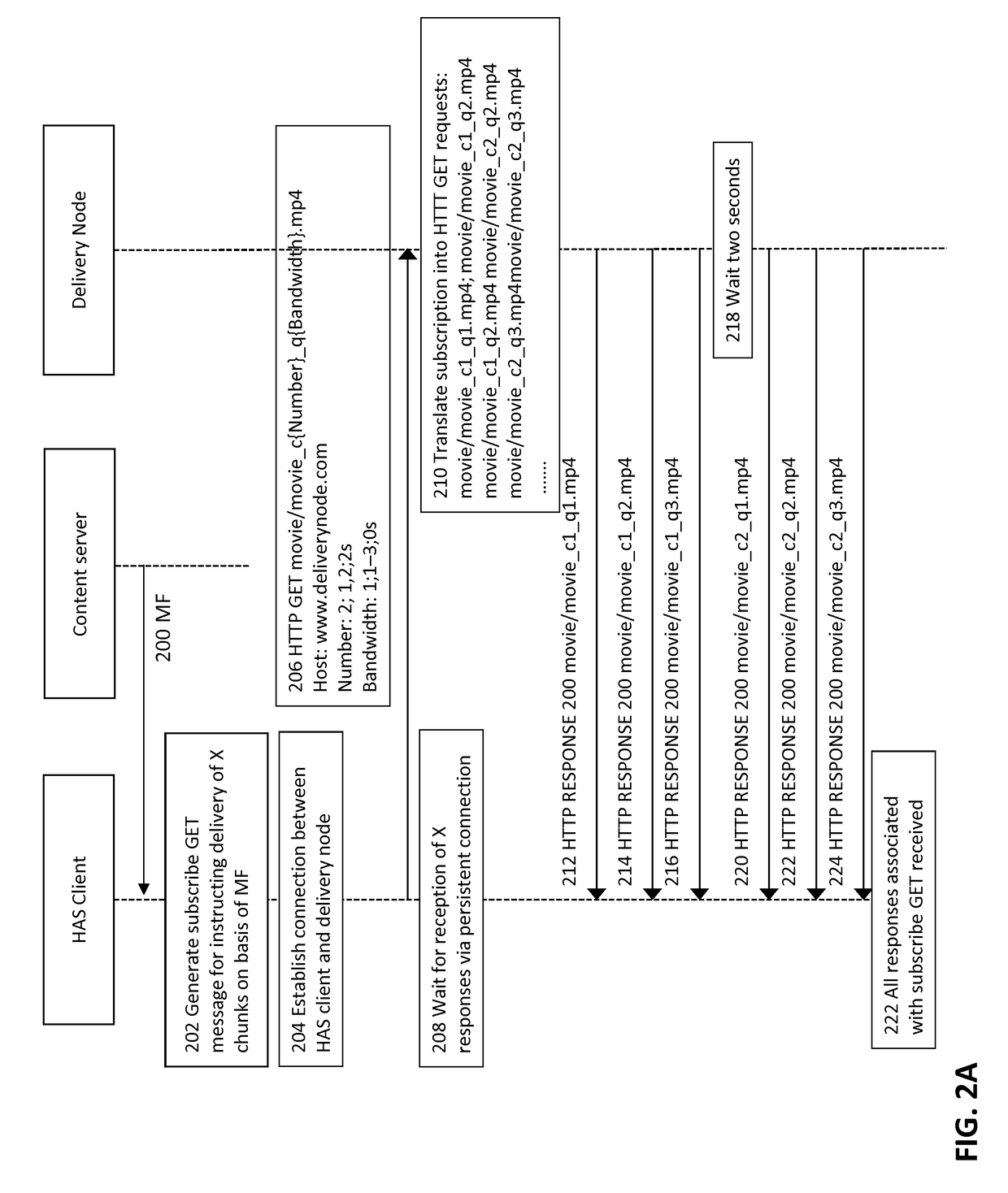Requesting multiple chunks from a network node on the basis of a single request message
- Summary
- Abstract
- Description
- Claims
- Application Information
AI Technical Summary
Benefits of technology
Problems solved by technology
Method used
Image
Examples
Embodiment Construction
[0072]FIG. 1 depicts at least part of a content delivery system for delivering multiple chunks to an adaptive streaming client on the basis of a chunk request message according to an embodiment of the invention. In particular, FIG. 1 depicts a schematic of a content delivery system comprising at least one content server 116 and one or more delivery nodes 1121,2 that may be connected via one or more networks (e.g. a core network 102 and an access network 104) to clients 1081,2.
[0073]The delivery nodes may deliver segmented content to the client on the basis of an adaptive streaming protocol such as the HTTP adaptive streaming (HAS) protocol. Examples of adaptive streaming protocols include Apple HTTP Live Streaming [http: / / tools.ietf.org / html / draft-pantos-http-live-streaming-07], Microsoft Smooth Streaming [http: / / www.iis.net / download / SmoothStreaming], Adobe HTTP Dynamic Streaming [http: / / www.adobe.com / products / httpdynamicstreaming], 3GPP-DASH [TS 26.247 Transparent end-to-end Packet...
PUM
 Login to View More
Login to View More Abstract
Description
Claims
Application Information
 Login to View More
Login to View More - R&D
- Intellectual Property
- Life Sciences
- Materials
- Tech Scout
- Unparalleled Data Quality
- Higher Quality Content
- 60% Fewer Hallucinations
Browse by: Latest US Patents, China's latest patents, Technical Efficacy Thesaurus, Application Domain, Technology Topic, Popular Technical Reports.
© 2025 PatSnap. All rights reserved.Legal|Privacy policy|Modern Slavery Act Transparency Statement|Sitemap|About US| Contact US: help@patsnap.com



